Вы здесь
Dungan Mosque in Karakol.
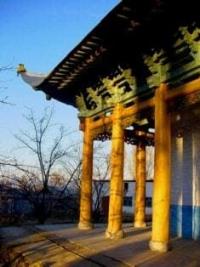
Tours over monuments of architecture Issyk-Kul of province.
"I found the village of Karakol, now Przhevalsk, founded in 1865 in connection with the Dungen rebellion against China and the subsequent unrest at our Semirechye border, already somewhat built up and received an apartment in it in a very decent three-room house, built of beautiful spruce logs. There was even in this embryo of a town (Now it has been made a district town and transferred to the mouth of the Karakol in the Dzhirgalan Gulf of Issyk-Kul.) a Tatar trading settlement, with goods more suited to the Kirghiz hand; small caravans also came to Ak-su from Kashgar."
"Travel through Turkestan region and exploration of mountainous country of Tien-Shan." N. Severtsov, 1873.
Excursions to Dungan Mosque in Karakol.
Dungan mosque named after Ibrahim azhy is located at an altitude of 1729 meters above sea level, located on Abrahmanov Street 140, in square of Bektenov, Gebze, Abdrakhmanov and Przhevalsky Streets in town of Karakol, Issyk-Kul Region.
This building is one of the magnificent structures of Dungan architectural construction. It reflects the characteristic construction traditions of the Dungans.
History of construction of Dungan mosque in Karakol.
The Dungan mosque is a unique building in Kyrgyzstan in the architectural style of the Chinese Qing era (1644 - 1911). inheriting the features of a Buddhist pagoda. In 1907, the Dungan community of Przhevalsk invited the famous Beijing architect Zhou-Si (Zhyn Zhen), who was a master of the construction and compositional techniques of traditional Chinese architecture, to build a mosque.
He brought with him 20 Chinese carvers who did all the woodwork (local craftsmen were involved in the construction of the foundation, brickwork and auxiliary work). The wooden parts of the future mosque were prepared for about three years.
Zhou-Si applied ornaments to specially selected and processed wood, which were carved by his assistants. Then, in three months, all the parts were assembled, and on May 10, 1910, the construction was completed.
Architectural features of Dungan mosque in Karakol.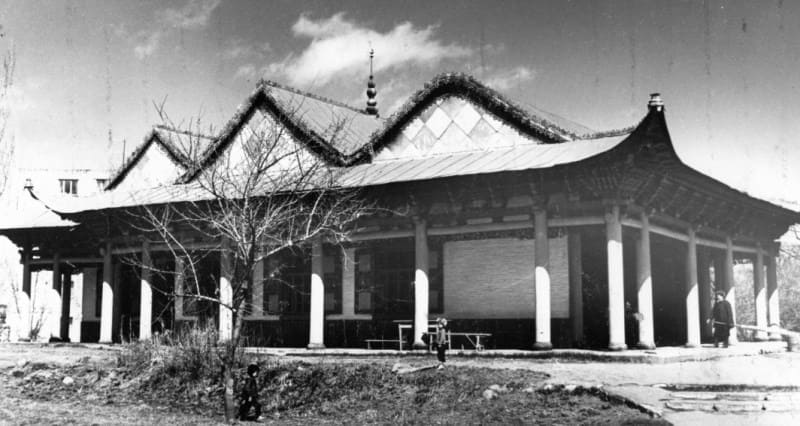
An ingenious system of notches allowed the builders to do without any metal fasteners. The multi-tiered wooden cornice surrounding the building is decorated with images of plants (grapes, pomegranates, pears, peaches). The traditional Chinese colors - red, green, yellow - add brightness to the building, emphasizing its original form, and contrast with the blue-painted roof structure and the plastered brick "core" of the mosque.
The wavy, gently sloping silhouette of the building echoes the contours of the surrounding mountains. The triple triangular gables of the roof face south and north. 30 golden-yellow pillars support the roof and form an open colonnade (surrounding the mosque along the perimeter).
The rows of wooden columns echo the traditional Karakol poplars. It was built with slightly curved roofs and is a one-story building with 42 pillars encircling the walls, located in two rows. The multi-tiered wooden cornice is decorated with carvings depicting plants and fruits, fairy-tale animals - dragons, phoenixes, etc.
The area of the mosque is impressive, especially when compared with similar buildings in Central Asia. The dimensions of the mosque in plan are 24.88 × 15.33 m. The height from the base to the cornice is 4.15 m. The entrance to the building is in its eastern part.
The mosque stands on an elevated embankment, bordered by a granite curb. The slope of its sides is maintained at a strictly 45-degree angle and has granite drains to drain falling water from the roof. This was done in order to protect the wooden supports and other elements of the building from exposure to dampness and premature destruction.
The mosque is supported by 44 pillars (zhuzes), excluding those that are embedded in the walls. They stand on specially cut stones, on these pillars rests the roof with a complex system of beams and rafters. The roof of the mosque is ceilingless, rafterless.
The supporting pillars (zhuzes) are the basis of the walls, while the brick filling does not have a supporting function, but is only a partition. By its type, the mosque is a frame-and-pillar structure, like many other traditional residential and religious buildings of the Dungans.
In the construction of such buildings in the past, metal products such as staples and nails were not used. The fastening of individual parts of the frame was done with the help of grooves (mo). It has a traditional layout in the form of a rectangle with two rows of columns in the eastern (at the entrance) and western (mikhrab) parts of the building.
Windows are arranged in the southern and northern walls, the western side of the mosque is windowless - the faces of the worshipers are turned here. The mosque has 4 supporting pillars, located in two rows along the perimeter of the building.
The supporting pillars stand on hewn stones - bases, supporting the wooden patterned cornice and the roof of the mosque. Despite the apparent complexity of the architecture of the mosque building, it is easy to assemble without a single nail, since the builders used a system of cuts and grooves.
The carved patterns of the cornices use ornaments and scenes inspired by folk mythology - fantastic monsters - dragons, phoenixes, lions, which, according to folk legends, protect buildings from disasters and evil spirits. The color of the building, the material and color of the roof in Dungan architecture were strictly regulated.
Traditional colors - red, green, yellow - add brightness to the original shape of the building. All wooden parts and columns were painted red, the walls were purple, the roof was green, and the carved structures were in two colors: plant patterns (grapes, pomegranates, pears and peaches) were in green, and mythological animals were in yellow.
According to folk mythology, each color has a certain meaning: red protects the building from evil spirits and disasters, yellow brings wealth and greatness, and green brings well-being and happiness. It now functions as a Muslim mosque.
During the Soviet period, the main building of the mosque was not subjected to major reconstructions, preserving all its original beauty. In the 1930s, the minaret, which stood separately from the mosque, was lost. The current minaret was built in 1940.
The Dungan Mosque in Karakol is a historical and cultural monument of national significance.
Geographical coordinates of Dungan mosque: N42°29'50 E78°23'26
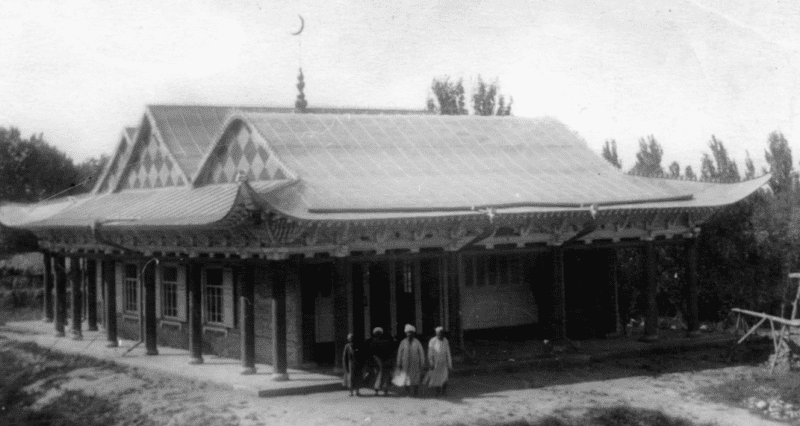

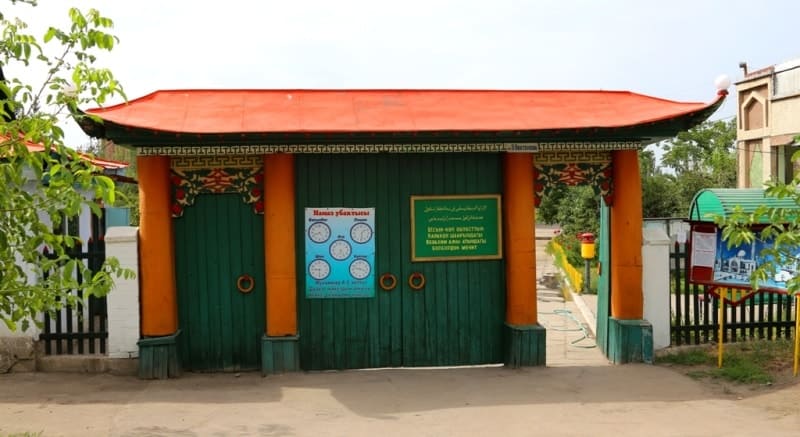
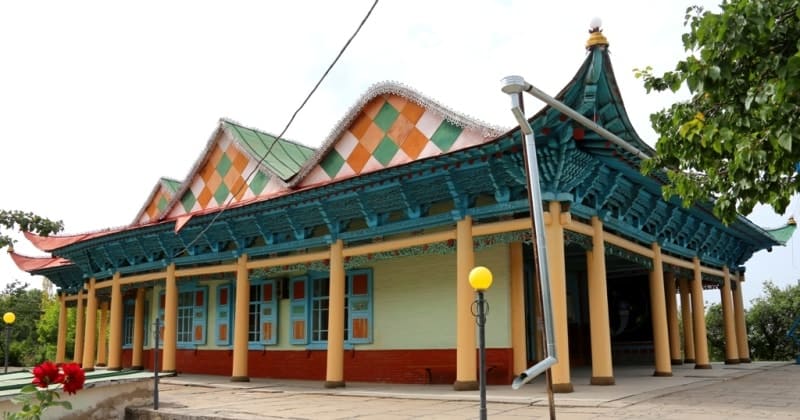
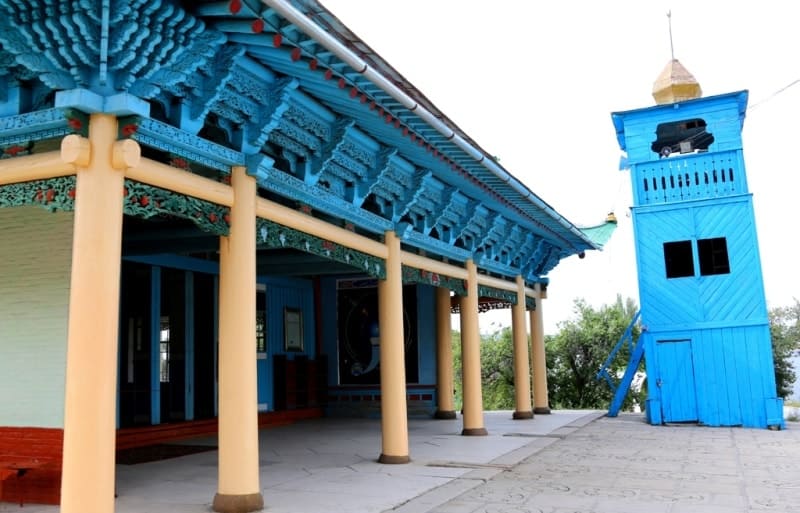
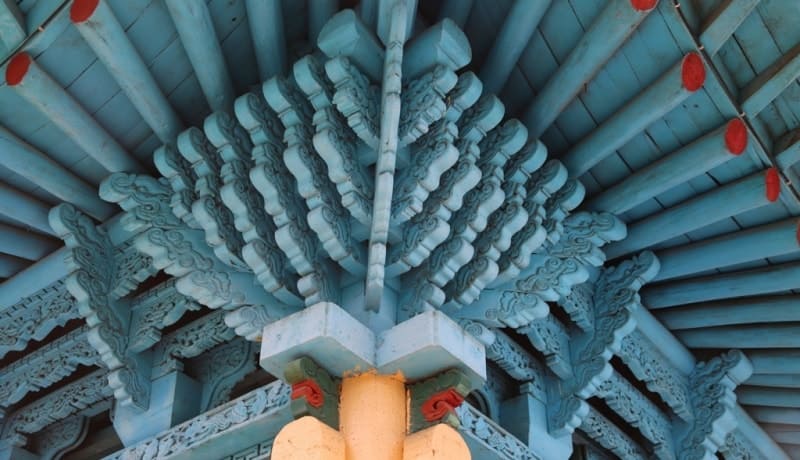

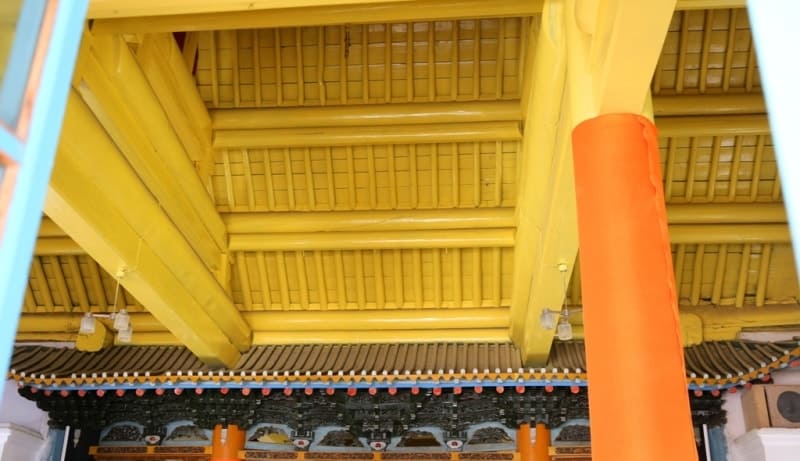
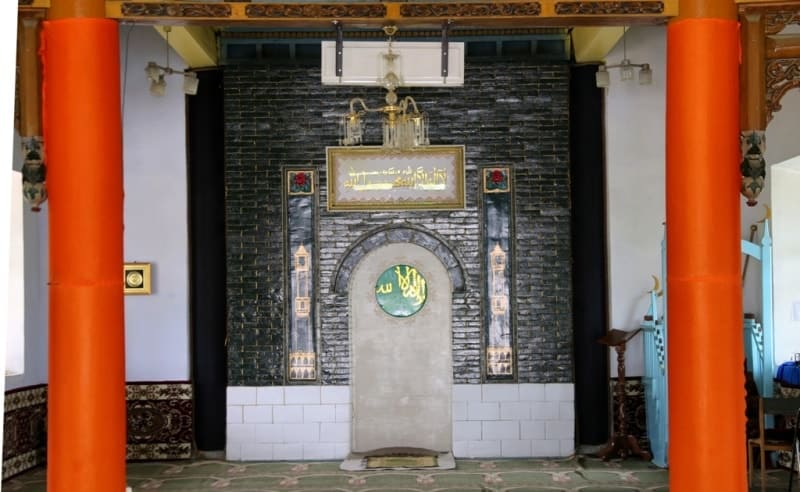
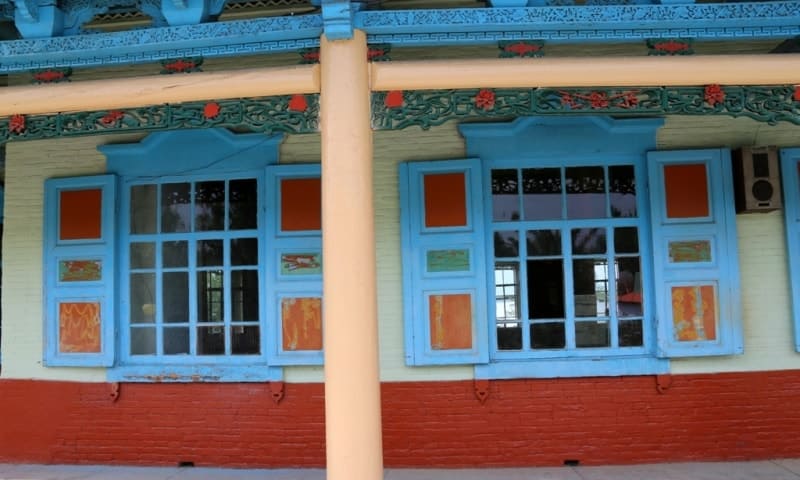
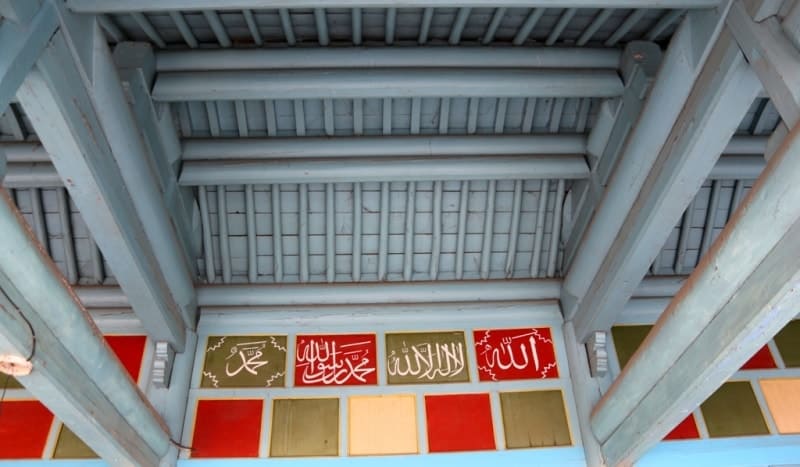
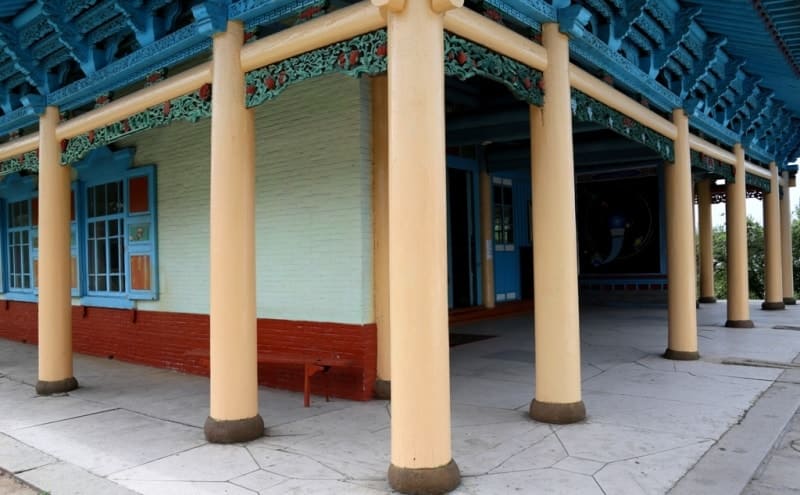

Authority:
The book «City Vernyi and Semirechye province» 2009, author A.G.Lukhtanov.
Photos by:
Alexander Petrov.







